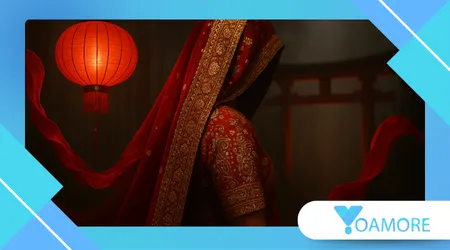The Power of Red: How Colors Protect and Attract in Different Cultures

Since ancient times, color symbolism in cultures has played a central role in rituals, social identity, and emotional communication.
Anúncios
This article explores how red — a color of intensity and contrast — embodies both protection and attraction across civilizations.
With a humanized and analytical tone, this article examines — through the lens of 2025 — how red continues to be a universal language of energy, emotion, and identity.
What Is the Symbolic Meaning of Red in Cultures?
Understanding red requires seeing it as more than a pigment: it’s a coded emotion. Researchers from University College London highlight that color symbolism in cultures reflects both biological reactions and social conditioning.
Red activates the sympathetic nervous system, raising heart rate and heightening attention — one reason it’s used in warning signs and alerts.
Anúncios
In Chinese tradition, red signifies joy and luck, omnipresent in weddings, New Year festivals, and prosperity envelopes.
Across parts of Africa, it can symbolize mourning or authority, depending on the region. In Western societies, red often signals passion, energy, and vitality.
These differences show that color is a social language shaped by context — an expression of how each culture perceives power and emotion.
++Why Do People Knock on Wood? The Origins of a Global Superstition
Why Is Red Used for Protection and Warning?
Across many traditions, red serves as a spiritual and physical safeguard. In Japan, red torii gates mark sacred spaces; in rural Greece, red charms protect against the “evil eye.”
The protective meaning dates back millennia. Because red is the color of blood and fire, it was seen as the essence of life and purification. This explains why red flags, emblems, and uniforms historically represented courage and sacrifice.
In the modern world, red appears in stoplights, emergency buttons, and alarms because it provokes immediate human response. Color psychology confirms that red is the first hue people perceive in peripheral vision.
| Function | Cultural Examples | Symbolic Meaning |
|---|---|---|
| Alert / Protection | Red cards in sports, traffic signs | “Stop,” “Caution,” “Immediate Action” |
| Warding off evil | Red seals in China, red torii gates in Japan | “Renewal,” “Spiritual cleansing” |
| Vital energy | Indigenous rituals, blood offerings | “Life force,” “Spiritual power” |
How Red Attracts Luck, Prestige, and Desire
Red doesn’t just protect — it seduces. In India, married women wear red sindoor powder as a sign of fertility and devotion. In Mexico, the “Día de los Muertos” (Day of the Dead) uses red to symbolize vitality and rebirth. Wikipedia – Color Symbolism
Studies published in Frontiers in Psychology (2023) show that people wearing red are perceived as more attractive and confident. This explains why the color dominates luxury fashion, sports cars, and global logos like Coca-Cola or YouTube.
In e-commerce, red evokes urgency — “limited offer,” “last chance.” In entertainment, it conveys emotional intensity and passion. This dual nature makes it one of the most strategic colors for global communication.
++How Ancient Civilizations Explained Natural Disasters
What Explains the Cultural Variations of Red?
Differences arise from history, religion, and environment. Desert cultures associate red with the sun and survival; colder regions view it as warmth and vitality.
In Hinduism, red embodies Durga, the goddess of feminine strength, while in Christianity, it represents martyrdom and the Holy Spirit. Both views link red to transformation and power.
Recent studies also reveal gender-based differences in perception. Men often associate red with dominance, while women connect it to romance and confidence.
Understanding these nuances allows brands and designers to communicate with greater cultural empathy.
The Psychological Impact of Red on Human Behavior
The power of red extends deep into human psychology. Research from the University of Rochester indicates that people exposed to red act faster and more decisively — but also experience higher emotional tension. This paradox makes red both stimulating and dangerous.
In environmental psychology, red is classified as a “warm color” — it raises energy levels and excitement but can cause fatigue when overused. In restaurants, it stimulates appetite; in offices, it triggers urgency.
Technology, sports, and entertainment companies exploit this duality: Netflix uses red to spark emotional engagement; Ferrari employs it to express speed and prestige. These choices prove that mastering color symbolism in cultures means mastering human behavior.
++Rituals to Invite Prosperity in Different Cultures
When Does Red Take on Negative or Ambiguous Meanings?

Despite its vibrancy, red can also convey aggression, danger, or loss. In financial contexts, “in the red” signifies debt and instability.
In some Middle Eastern cultures, red is associated with anger or misfortune — which is why global brands often adjust color palettes by region.
Historically, red flags have represented revolution and conflict, while in religion, they may symbolize punishment or divine wrath. Understanding these layers ensures respectful and effective cross-cultural communication.
How to Apply Red in Branding and Communication
Designers and marketers can follow key principles to use red wisely:
- Study local context. Red does not mean the same thing everywhere.
- Define intent. Decide whether red will symbolize passion, warning, or prestige.
- Control saturation. Deep reds convey luxury; bright tones energize.
- Test audience response. Even subtle shifts in hue can affect engagement.
According to Color Marketing Group research, brands that localize color strategies see up to 25% higher cultural acceptance. Thoughtful use of red fosters trust and authenticity — essential elements of E-A-T (Expertise, Authoritativeness, Trustworthiness).
Conclusion
Red is far more than a visual accent — it’s a cultural narrative about life, emotion, and power. Through the lens of color symbolism in cultures, we see that this single color can embody both protection and seduction, fear and fortune.
For global marketers, artists, and communicators, understanding red means understanding emotion itself. In an era where visuals transcend language, mastering the psychology of red is mastering connection.
Next time you use red, ask: Are we protecting or attracting? In which culture? And what message are we truly sending? That reflection transforms color choice into cultural intelligence. ArXiv – Cultural Perception of Colors 2025
Frequently Asked Questions
1. Does red always mean good luck?
Not always. In China and India, yes — it symbolizes happiness and prosperity. In parts of Africa or Europe, however, red can signify mourning, danger, or protest.
2. Is it safe to use red in global marketing?
Yes, when culturally adapted. Understanding color symbolism in cultures prevents misinterpretation and improves message reception.
3. Is red the most attention-grabbing color?
Yes, but only when used intentionally. It draws the eye faster than any other hue, yet overuse can create fatigue or anxiety.
4. How can red be balanced in design?
Combine it with neutral tones (white, gray, black) to moderate intensity. Studies on color harmony show that moderate saturation enhances acceptance and readability.
